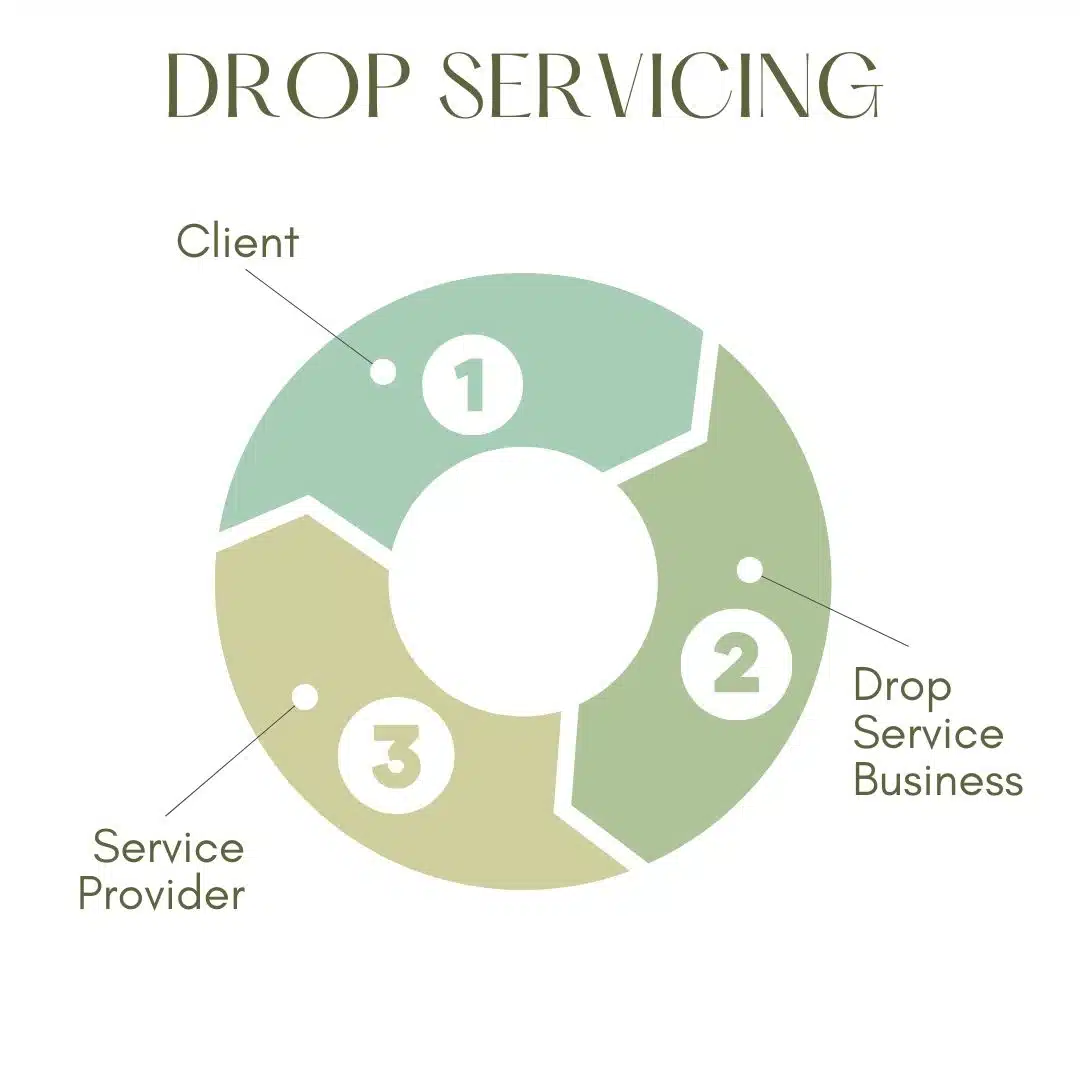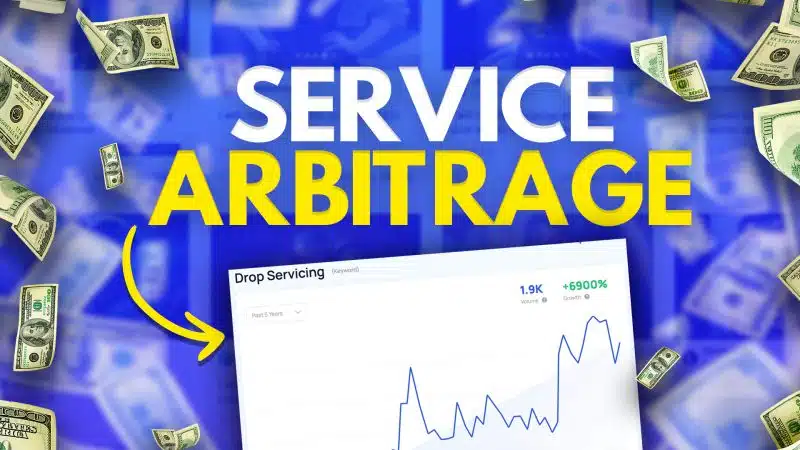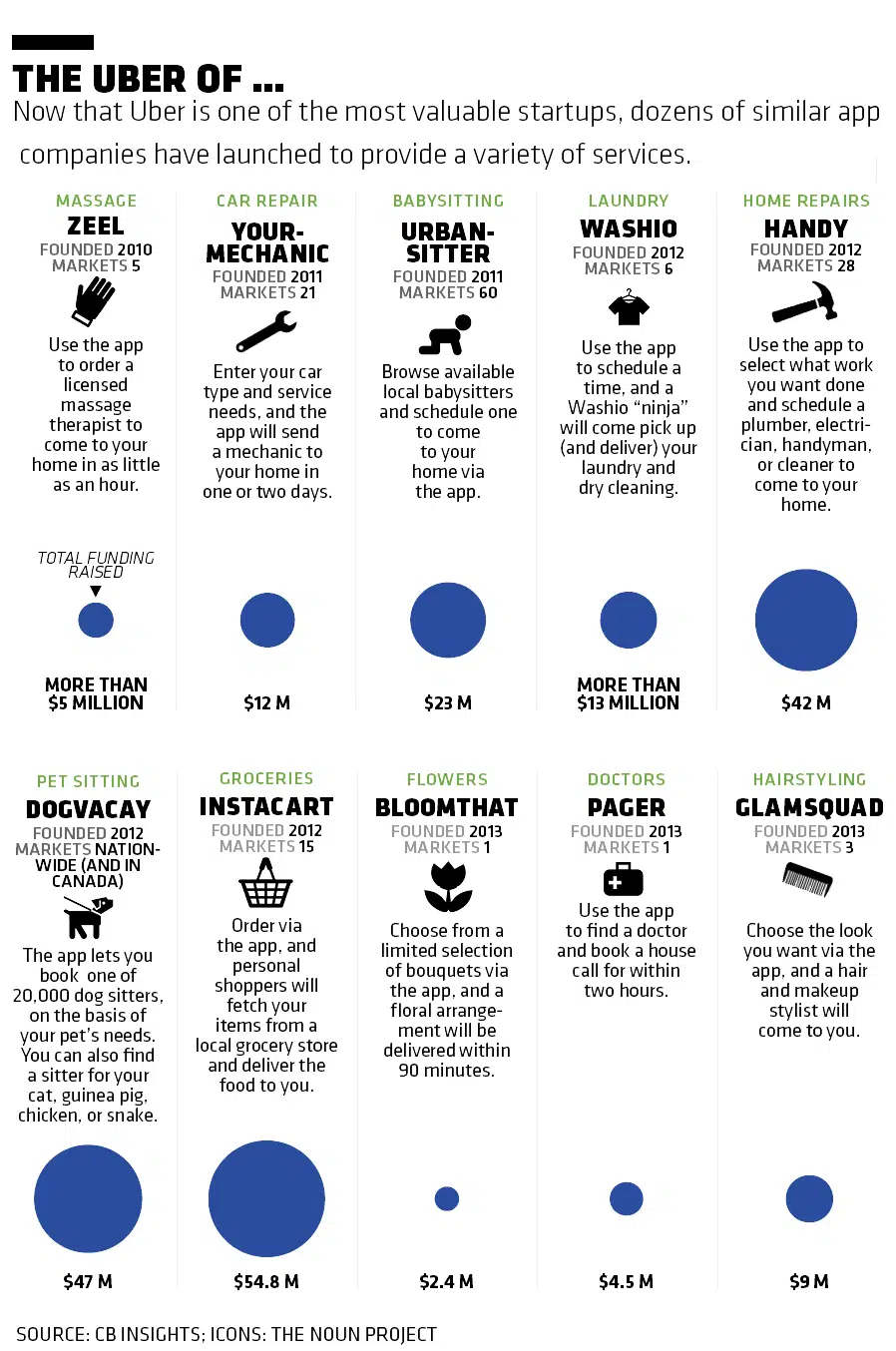TL:DR Drop servicing is a business model where you sell a service to a customer and then outsource the service fulfillment to a third-party provider. Drop servicing is becoming more popular, and it can be used for any services that do not require licensing and can be delivered virtually.
Editor's Note: This article uses the terms "drop servicing" and "service arbitrage" interchangably. They refer to the same thing.
You've likely heard of dropshipping, a concept made wildly popular in Tim Ferris's best seller The 4 Hour Workweek, but have you heard about drop servicing? It's a method that has been exploding in popularity over the past 5 years, seeing 6,900% interest growth.

In this blog post, I'm going to answer questions about it, such as:
- What is drop servicing?
- Why does drop servicing exist?
- What are some real-world examples of drop servicing?
- How can I get started with drop servicing?
- And more.
Ready? Let's get into it.
What Is Drop Servicing?
Drop Servicing, also referred to as "service arbitrage," is the process of selling a service provided by a third party.
You sell a service to a customer, and the service is fulfilled by someone else who may or may not know that they are sub-contracting for you.

In this scenario, one functions as a transactional middle person, connecting clients with freelancers or contractors.
Profit is made by charging clients more than a freelancer or contractor would charge.
Is It a D*ckhead Move to Drop Service?
If you are asking yourself, "is this ethical?" congratulations, you have a fully functioning conscience!
I believe that drop servicing is not only ethical, but that it's actually a valuable service that helps both the service provider and the customer who purchases the sub-contracted service. I'm going to explain in more detail why drop servicing works, and I think that by the end, you'll see why I feel this way.
If you want an answer from me though, no, you're not a d*ckhead for doing this. Almost every business is based around the concept of arbitraging something. Whether it's products or services, it's how a business becomes profitable.
What Types of Things Work with Service Arbitrage?
If you like the concept, your next question is surely "what services would be a good fit for this?"
The answer is anything that doesn't require some sort of licensing (lawyers, doctors etc.) and can be delivered virtually. Sure, you can drop service things like yard work, but that's not in the spirit of this website!
Here are just a few ideas of services that could be drop services.
- Excel support
- App development
- AI prompt engineering
- SEO
- Link building
- Content creation
- Homework help
- Video editing
- Audio editing
- Design
- Photo editing
- Ad writing
- Paid ad management
- Website building
- And many, many more.
If you need more motivation, check out the gigs available on a website like Fiverr.com or Upwork.com. Those are mostly things that could be drop services.
Not all drop services are created equal, of course.
The ideal scenario is to drop service things with large margins. Think a website design that nets $1,000 vs. a one time photo editing gig that nets you $20 and takes 3 hours to facilitate.
Pros and Cons of Drop Servicing
Before you go searching for your drop service business idea, let's weigh the pros and the cons.
Cons:
I believe that even with the drawbacks, drop servicing is an exciting model that is great for anyone looking to earn some extra money online.
Why Does Drop Servicing Work?
You might wonder, "why wouldn't the service provider just sell straight to the customer?"
In most cases, they do, but there are many reasons why they are underperforming on their sales potential. By filling in these areas of weakness, we can earn a profit.
Here are the core reasons drop servicing is possible.
Reason #1 Priced Incorrectly
The most straightforward mistake that people make is undervaluing their service. A service that is priced too low is a requirement for service arbitrage to work.

Items can be priced incorrectly, not just in what the providers charges but also in how services are billed and delivered.
Many drop servicing companies work on subscription as a service payment models. They offer a fixed amount of "gigs" (services) for a recurring fee.

Much like how gyms operate, most people fail to use all the service they pay for. Unused services mean less service costs for us. This means that there is usually a higher average customer value but less work to achieve it.

Although our goal should be to create a service that people love to use, we do make more money when people don't use it.
Make sure that your service is so good that even if your customers don't use all of their credits, they are still happy to pay for the subscription.
See my blog post here for some subscription-as-a-service programs for inspiration and check out this blog post I wrote that goes into creating a subscription service in more detail.
Reason #2 Poor Marketing
Being great at performing a service AND marketing is like being MLB pitcher Shohei Otani. To do both at the highest level is extremely rare.
Drop servicing allows people who are great marketers to come in and boost sales dramatically, even in competitive niches.
Let's check a real world example of this poorly optimized Fiverr gig.

This gig is priced very low, has amazing reviews, and is recommended by Fiverr. The low price is a good sign for an opportunity, but there are also marketing opportunities here.
Something as simple as a typo in the title can hurt sales big time. This one has a typo in the title.

Although this isn't a gig I'd drop service because of the niche, this principle should be followed when searching for one that will work for you.
Other ways that marketing can be employed to drive more sales at higher prices include:
- Creating an optimized sales page.
- Running paid ads to the service.
- Creating high quality upsells.
Marketing skills can be the true x-factor in creating a great drop service business.
Reason #3 No Owned Traffic
Many service providers are relying entirely on 3rd party marketplaces like Fiverr or Upwork to make sales. If you already have an existing audience, you can sell your service to them immediately at no cost to you.
Your audience will get a connection to a service that you have vetted and recommend, and you can drive sales that the service provider wouldn't be able to on their own.
Examples of Drop Servicing
The best way to explain the concept is with some common examples of companies that leverage drop servicing. Let's start with one that you've certainly heard of, Uber.
The startup world is full of people pitching businesses that are, "the Uber of (insert niche)."
These almost always refer to a drop service business model.
Here's an infographic that shows some Uber inspired businesses that have sprung up.
Uber identified a client or consumer need (cheaper taxis), identified freelance contractors (anyone who had a car, a clean driving record and was looking to make some money), and functioned as middle persons in these transactions.
Few people question the ethics of this business model because it's obvious what they bring to the table for the people who work with them.
- Capital. These are publicly traded companies that have access to financial resources that the average person simply does not. They can capitalize on economies of scale thanks to this.
- Sales and Marketing. Thanks to the massive amounts of capital, these companies can hire the best and brightest in sales and marketing. They can spend a fortune on social media ads and commercials.
- Customer Base. Your best future customers are your past customers. Most people have driven in an Uber or at least know about it.
- Trust. I'm sorry, but starting your own freelance driving service is not going to be easy. One big reason is that people don't trust strangers to drive them around. Uber not only has built trust by delivering billions of successful trips, but they also have trust because of their app and accountability. You aren't going to get kidnapped by an Uber driver who is using the app correctly.
- Technological Infrastructure. Uber has an app that lets drivers clock in and out as they wish. Customers can buy whenever they want, and the process is much more seamless than searching the internet for a driver. This infrastructure lets 5.4 million people make money driving for Uber worldwide. This would not be possible without the help of their deep infrastructure.
- Tax Support. Uber provides their drivers with the end-of-year tax documents they need to properly file their taxes. However, it might help to learn more about the IRS 1099k form, which is what Uber sends to their drivers that cleared more than $20,000 in customer sales.
This should answer the question earlier about if service arbitrage makes you a d*ckhead. Everyone wins in service arbitrage.
Common Mistakes
There are a few common mistakes entrepreneurs might encounter when getting involved in service arbitrage.
#1 Starting Instead of Affiliating
Do you have an audience that wants a service? Before you jump in and create a drop service business, check to see if there is an existing solution out there that offers an affiliate commission for promoting them.
For example, I've considered doing a service for thumbnail designs. I found one though that I actually really enjoy called Custom Thumbnails. They offer an affiliate program with 20% recurring commissions for life.
Would I have better margins starting my own service? Probably, but here's what I'm getting out of doing...
- Customer support.
- Hiring and firing.
- Spending hours away from other projects.
This is why building your own audience is so powerful. You can bypass a lot of the day-to-day managing tasks that come with a service-based business.
Some service businesses actually offer white labeled versions you can buy. These will have smaller margins, of course, but they might be worth considering.
#2 Not Reading the Fine Print
It's best to work with providers who know that you're reselling their services, but if they don't, you need to make sure that there isn't any fine print that you're missing before reselling their services.
For example, many Fiverr gig have different pricing tiers. The lowest tiers rarely include commercial rights to the work. This would mean no reselling to clients.

#3 Not Eventually Hiring Your Own People
If you want to take your drop service business further, aim to slowly transform it into a real business that has trained employees you can rely on. This is especially true if you intend to sell your business in the long run.
Drop service businesses are difficult to scale until you transition them into more traditional service based businesses.
Alright, there you have it! Let me know if you have any thoughts or questions regarding service arbitrage in the comments below!


